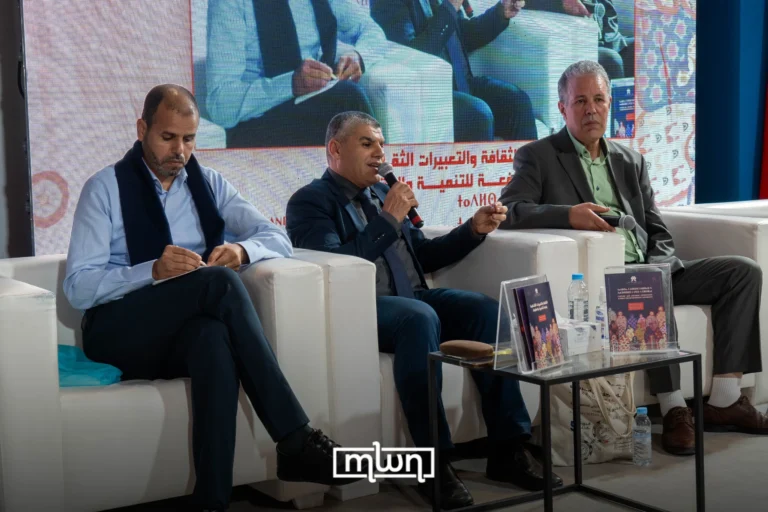Rabat – Morocco’s ancient rock art, long considered a treasure trove of history and culture, took center stage during a thought-provoking panel at the National Council for Human Rights (CNDH) booth at the International Publishing and Book Fair (SIEL) 2025.
Experts gathered on Saturday, April 26th, to discuss the significance of these engravings, their preservation, and the potential they hold for local development.
Mountassir El Ouakili, Director of the National Center for Rock Engravings in Agadir, shared insights on the progress of cataloging Morocco’s rock art. “Rock engravings are historical and cultural documents in themselves,” he told Morocco World News (MWN) on the sidelines of the panel, noting how these ancient carvings are invaluable in understanding the pre-writing and prehistoric periods.
Through collaborative efforts with institutions like the CNDH, the number of documented rock art sites in Morocco has surged from over 200 in the 1980s to more than 800 today. This expansion represents a monumental step in protecting Morocco’s diverse heritage. “Thanks to cataloging, we now have a clearer understanding of our rock art,” El Ouakili further explained.
The symposium’s focus was not just on preservation but also on the economic potential of Morocco’s rock art. El Ouakili stressed the need to turn these historical sites into drivers of economic growth, especially in vulnerable areas. “This symposium helps us understand the challenges threatening this heritage and explore ways to transform it into a tool for economic development,” he said.
A reflection of Morocco’s cultural diversity
Mustapha El Hamri, university professor, rock art researcher, also spoke on the panel, emphasizing the role of rock art in representing Morocco’s cultural diversity. “Rock art is integral to our national heritage,” he later told MWN, noting that the engravings span the entire country, from the northern Figuig region to the southern Tiris and Adrar areas.
He referenced the large economic returns rock art can yield for local communities, particularly in out-of-the-way places. “It is vital to protect these sites and integrate them into development planning,” El Hamri asserted. “If we do this, we can develop sustainable resources that can improve the standard of living of these communities.” His words emphasized the potential for rock art to become a tool for both cultural preservation and community development.
A broader African perspective
The panel also touched briefly on the broader applicability of Morocco’s rock art to other African nations. Panelists spoke about how the rock engravings of the nation compare to those of similar artwork in Sub-Saharan Africa, both culturally and chronologically.
Through an examination of these similarities and differences, the symposium sought to provide a greater understanding of Morocco’s place within the greater African heritage.
The debate gave a subtle view of how Morocco’s rock art is part of the common history of the continent but remains unique in itself. Experts balanced the meaning of the similarities and differences, investigating their cultural, historical, and anthropological significance.
A platform for cross-cultural exchange
The panel was part of the broader cultural programming by CNDH at SIEL 2025, which has seen a staggering 39% increase in visitors since last year’s event. This symposium was just one of a series of activities by CNDH to showcase the rich heritage of Morocco and give greater exposure to the topic of rock art.
In a time when heritage is in danger of being erased, Morocco’s relentless quest to preserve its rock art inspires hope. As El Ouakili and El Hamri explained, the ancient carvings are not simply relics of the past but pivotal elements of Morocco’s future.
Through additional research, conservation, and strategic integration into development plans, Morocco is able to preserve its rock art while allowing it to benefit local communities for centuries to come.





